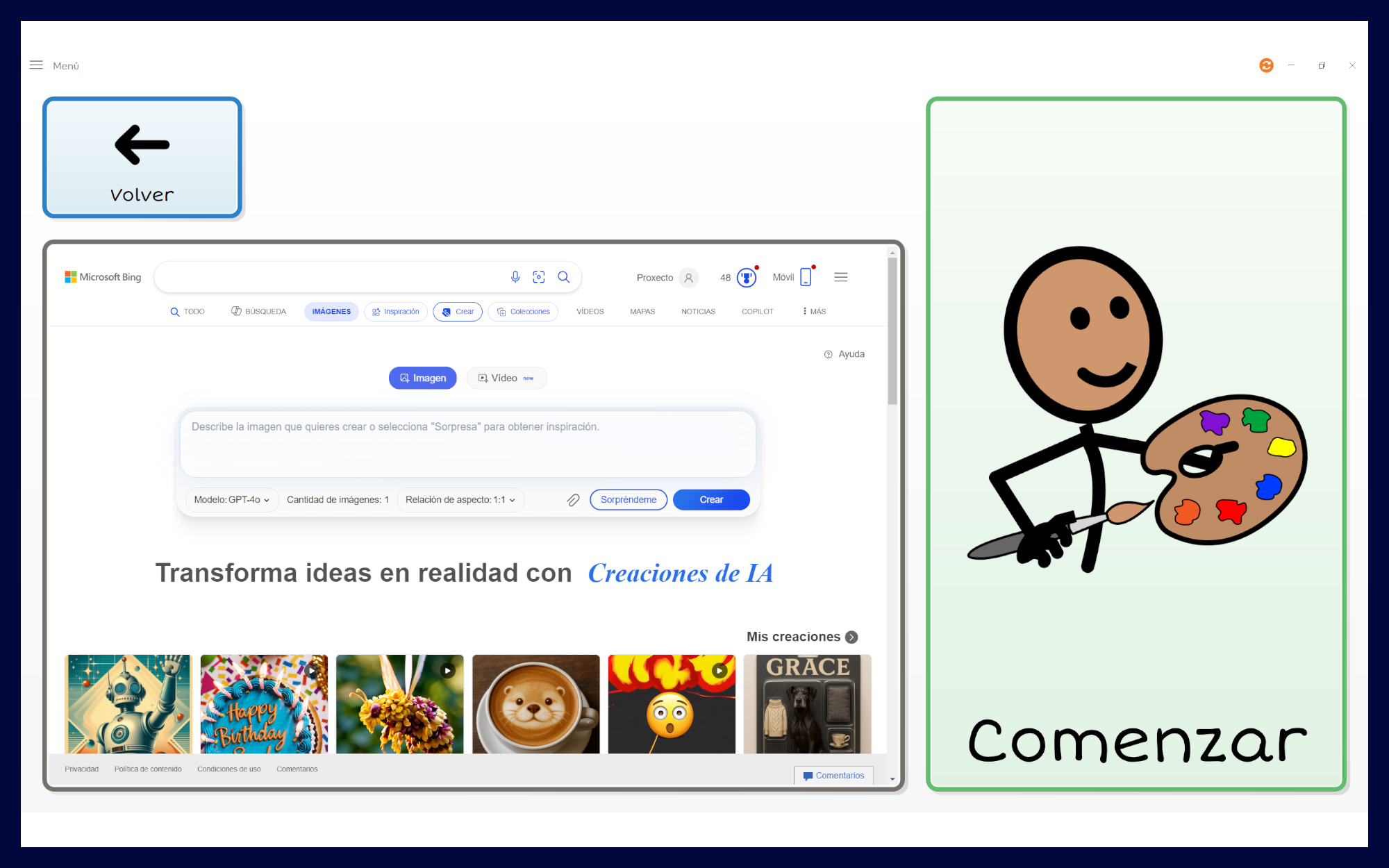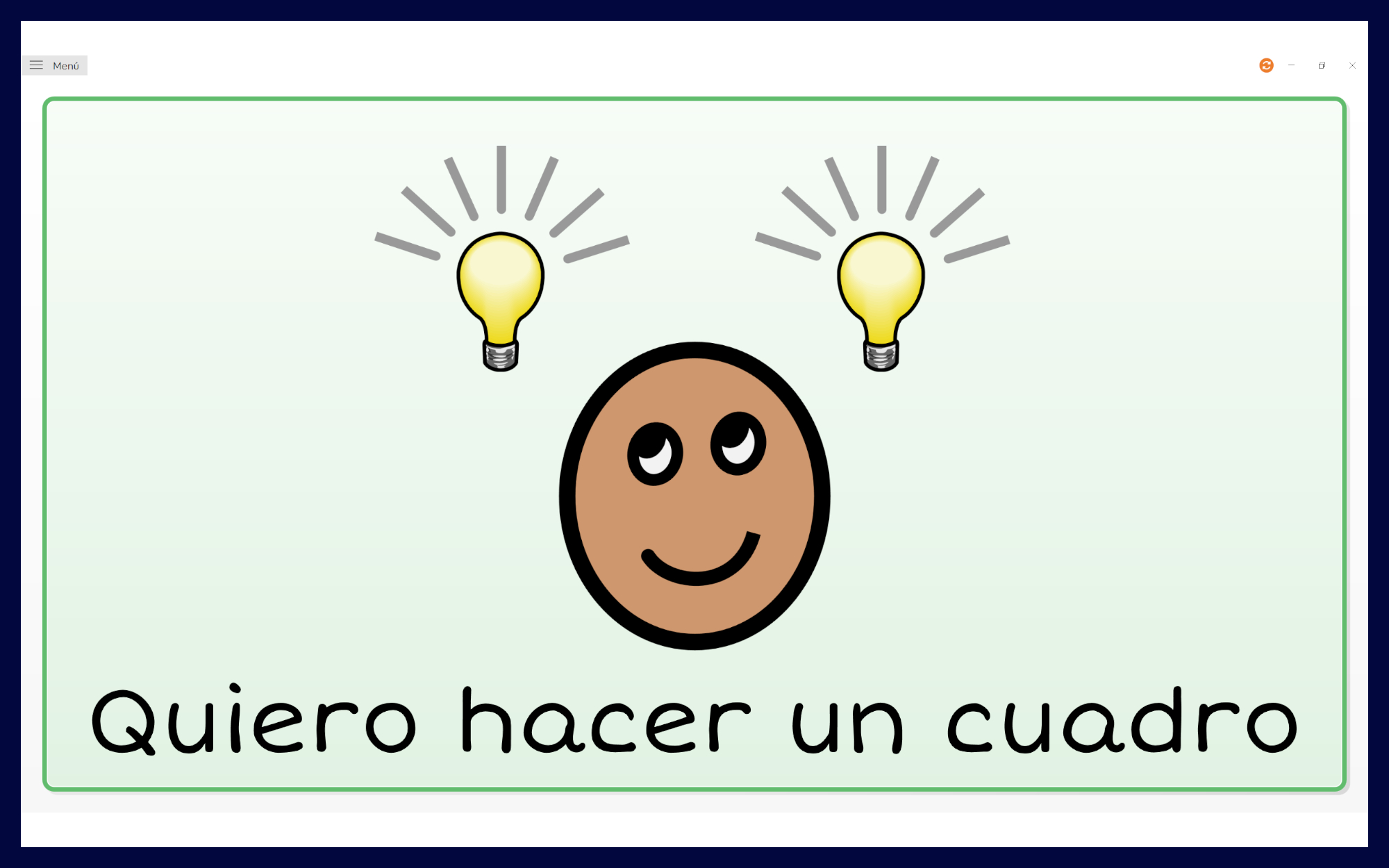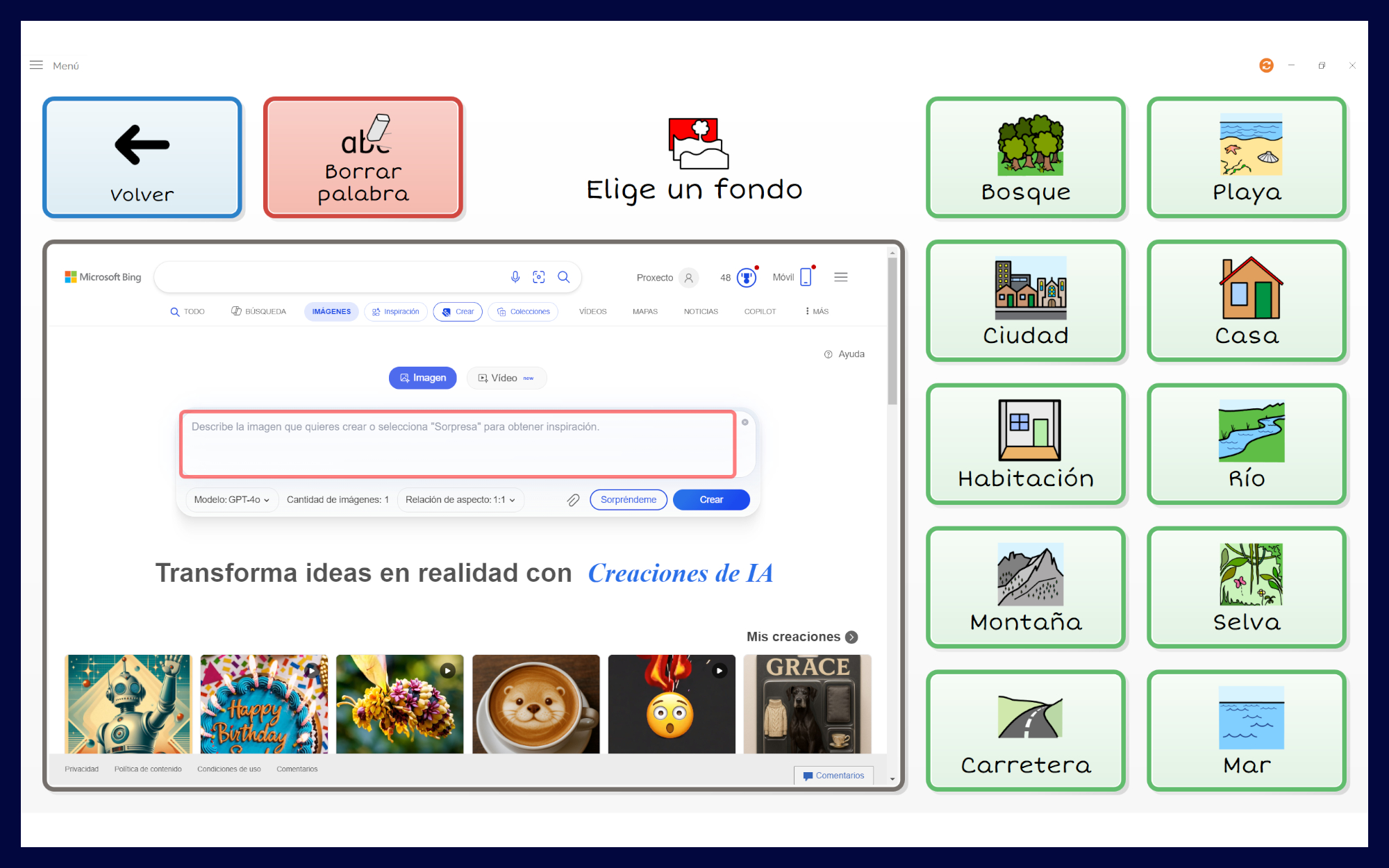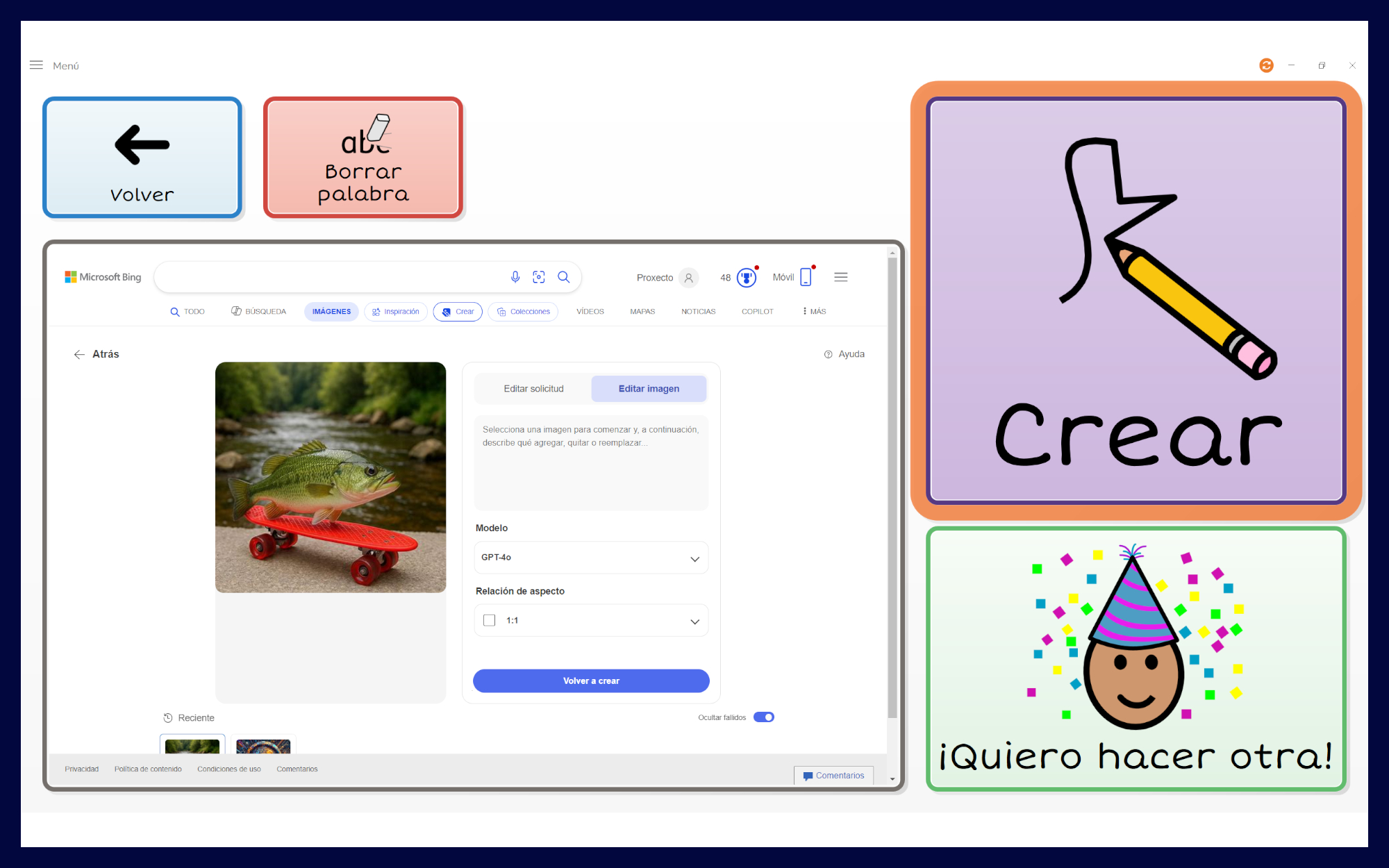griDALL-e
Adaptation of the Grid program that enables the creation of artwork through the use of Artificial Intelligence.
General description of the project
Implementation of a digital board based on Grid 3 that allows the generation of images through Artificial Intelligence (DALL-E). This tool offers people with intellectual disabilities or severe motor difficulties a new form of artistic expression, enabling them to create images without the need for typing or complex interaction with electronic devices. Thus, griDALL-e opens new opportunities in the fields of technological accessibility and digital creativity.


Technical Breakdown of the Project
Grid 3 is an augmentative and alternative communication (AAC) software designed to support people with disabilities in their communication and interaction with the environment. Through images, symbols, text, and voice, it allows users to create personalized boards tailored to their abilities and interests. These boards consist of grids with interactive cells that perform actions such as writing, playing sounds, opening other screens, or browsing the internet.
The program offers various access options: mouse, touch screen, eye gaze, voice, or switches, and can be configured according to each person’s needs. It also includes pre-designed boards created by professionals and the user community, while allowing the creation of new ones from scratch—customizing colors, images, layout, and cell behavior.
Within this project, a digital board based on Grid 3 was developed, integrating image generation through Artificial Intelligence (DALL-E). This innovation enables people with intellectual disabilities or severe motor limitations to create images and artistic expressions without needing to write or perform complex interactions with the device. The tool, named griDALL-e, represents a significant step forward in technological accessibility and digital creativity, providing a new channel for visual communication and personal expression.







Team
- Dr. Laura Nieto Riveiro, occupational therapist, TALIONIS research group
- Paula de Santos Dorrego, occupational therapist, TALIONIS research group
- Raúl Fraiz Gómez, occupational therapist
- Manuel Lagos Rodríguez, computer engineer, TALIONIS research group
- Jorge Rivadulla Brey, computer engineer, TALIONIS research group
- Iago Fernández Garrido, computer engineer, TALIONIS research group


